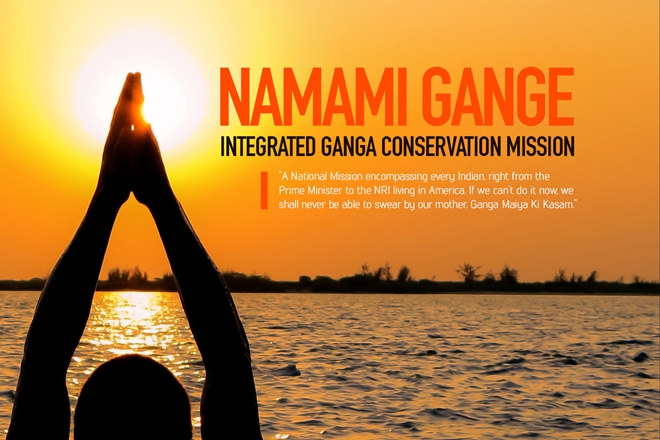
National Mission for Clean Ganga has brought on board Survey of India, the oldest scientific department in the country set up in 1767, to facilitate the Ganga rejuvenation task by using Geographic Information System (GIS) technology. Through the project which has been approved in the EC meeting at an estimated cost of Rs. 86.84 crore, NMCG aims to strengthen planning and implementation at national/state/local levels. The project includes use of Digital Elevation Model (DEM) technology which ensures accurate data collection, an important aspect for river basin management planning. DEM technology enables identification of entire topography of an area making it easy for policy makers to analyse the available data thereby supporting the decision-making process. Critical hotspots are also easily identified through this technology. The use of GIS technology for Namami Gange programme will also ensure decentralisation. The data collected and subsequent actions taken by the government can easily be shared with the local public through geo portals and mobile apps. The technology will also enable people to send their feedback up to the national level thereby providing an interactive and transparent platform. For effective discharge management, outlet of sewerage and other discharges from all units – industrial, commercial and all types of other institutions will be mapped from the source outlet to the public drainage network. In addition, the high resolution GIS enabled data will help in regulating the proposed protected and regulatory zones along the banks of river.
National Mission for Clean Ganga has approved a project to strengthen State Pollution Control Boards (SPCBs) of five main stem Ganga basin states of Uttarakhand, Uttar Pradesh, Bihar, Jharkhand and West Bengal so that they can frequently verify the quality of water in river Ganga and in case of any discrepancy appropriate action could be taken. The identified laboratories for this purpose are to be equipped in terms of advanced instruments and equipments with well-trained scientific personnel to carry out the pollution assessment and water quality monitoring activities in respect of existing and emerging pollutants. The strengthening of SPCBs will overcome the constraints of resources. This project has been approved at an estimated cost of Rs. 85.97 for five years.
In West Bengal, two projects worth Rs. 358.43 crore have been approved to develop sewerage infrastructure in Hooghly-Chinsurah and Maheshtala municipalities of West Bengal. These two projects together will stop nearly 56 MLD sewage water from directly merging into river Ganga.
Maheshtala is an important town and part of Greater Kolkata. In Maheshtala, the project includes construction of interception and diversion sewer network (27 km), one STP (26 MLD), rehabilitation of existing infrastructure along with operation and maintenance for 15 years at an estimated cost of Rs. 198.43 crore. In Hooghly-Chinsurah, the project includes construction of one STP (29.3 MLD), laying of 20 km of sewer line, construction of 2 pumping stations, rehabilitation of existing infrastructure along with operation and maintenance for 15 years at an estimated cost of Rs. 160 crore. Both these projects have been approved to be taken up under Hybrid Annuity based PPP model.
These four new projects worth Rs. 531.24 crore were approved in the 11th Executive Committee meeting of National Mission for Clean Ganga (NMCG) chaired by Shri Rajeev Ranjan Mishra, Director General, NMCG held recently.














Comments